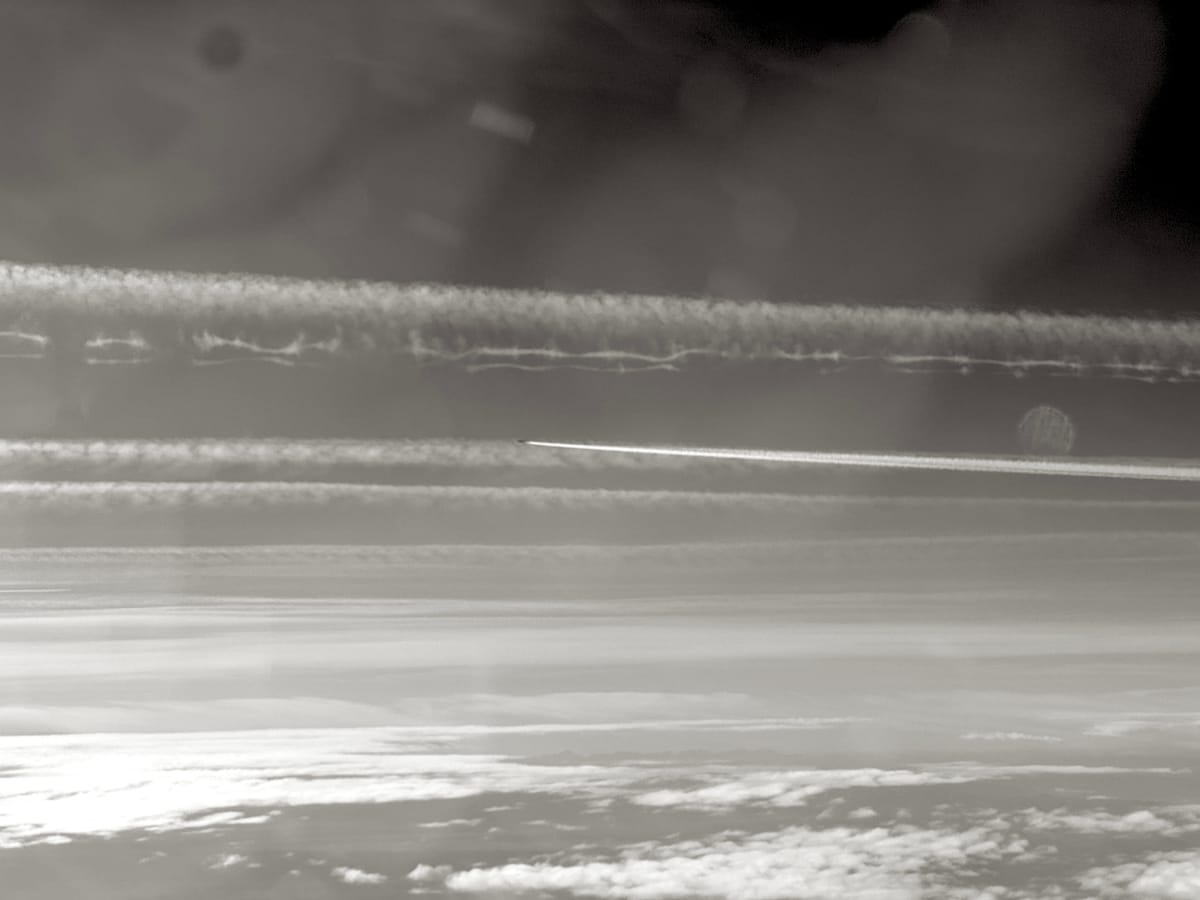Why it’s time to change course for the climate

Welcome to Contrails.org. We’re excited to share our mission and start documenting progress in this new Contrails.org Notebook.
In recent years, science has given us a much clearer picture of the major role that contrails – those thin, wispy clouds planes sometimes leave behind – can play in contributing to global warming. By trapping heat, many contrails are responsible for between 1-2% of all human-caused warming each year. To put this in perspective, that’s a larger impact than the total warming caused by all aviation-related CO2 emissions since 1945.[1]
That’s the bad news. But the good news is that the solution to reducing their impact could be both very affordable and relatively simple.
In many cases, it can be practically feasible to avoid the most warming contrails through small course changes in flight altitude or horizontal routing to avoid the atmospheric conditions that produce harmful contrails (typically areas of ultra-low temperatures and high humidity).[2]
The exciting part? We don’t need to manage every flight to see results. Just 5% of flights—mostly concentrated in a few key regions such as over North America, the North Atlantic and Northern Europe—generate 80% of contrail-caused warming.[3] Better yet, properly implemented, contrail management is low-cost: studies show a fleet-average fuel cost of roughly $5.00 per flight, or less than $1 per tonne of CO2 equivalent warming avoided.[4] (Edit: We recently wrote a post fleshing out the Cost of Contrail Management. Through this analysis, we've revised our estimates up slight to ~$20 per flight and $1.75 per tonne CO2eq.)
When it comes to climate change, there are very few straightforward fixes or quick wins. But this comes very close.
We want to be clear: the case for action on contrail avoidance is not to be mistaken for an excuse for inaction on decarbonization of aviation through efforts like sustainable fuels, alternative propulsion or more efficient aircraft. But as we brace ourselves for another year of record-breaking temperatures and climate anomalies, we can’t pass up this clear opportunity to slow down global heating.
If it’s all so straightforward, you might be asking – why isn't contrail management a standard part of flying already? When we’re dealing with complex science and a global, interconnected industry like aviation, even relatively simple fixes take a lot of work to prove and implement.
That's why we're relaunching Contrails.org this week as a non-profit applied research organization with a renewed mission and scope. Our initiative, founded at Breakthrough Energy (and formerly called "Reviate"), brings together leading scientists, technologists, and industry experts working to make contrail management a practical reality.
Our work is focused across three interconnected areas:
Science: The science is clear that contrail warming is significant and much of it could be avoided.The more we understand when, where and how contrails form and cause warming impacts, the more confident and precise we can in the solutions. We’ll coordinate, support and sponsor strategic research to better model, observe, and measure contrails to improve understanding and de-risk uncertainties.
Technology: The contrails community needs the best tools and science at its fingertips. We develop or collaborate open-source models, tools and protocols to expand access to contrail resources and build common frameworks for wider deployment.
Implementation: Ultimately, people need to turn this understanding into action, from policymakers to pilots, atmospheric physicists to air traffic controllers. We deploy real-world trials to demonstrate operational feasibility and effectiveness, and resolve system-level hurdles to build pathways for implementation at scale.
By bringing these three areas together, we are confident that Contrails.org, working with our partners, can accelerate contrail management so that it becomes a standardized, widely implemented part of aviation operation in years – not decades. We are seeing contrail science progress faster than ever before, and are working with first-mover airlines to test out solutions in the real world. To keep this momentum going, we need to bring these efforts together–and that’s where we hope to build a real movement for change–driving forward both contrail science and real climate action.
Over the next few weeks, we will be sharing more about where we currently stand with contrail science and where we’re going next. Make sure you’re following us here, and also on our new LinkedIn community to stay up to date on our work.
Footnotes
1 Lee et al., 2021, “The Contribution of Global Aviation to Anthropogenic Climate Forcing for 2000 to 2018.”
2 Sonabend-W, A., Elkin, C., Dean, T. et al. 2024, Feasibility test of per-flight contrail avoidance in commercial aviation.
3 Teoh et al, 2024,. “Global aviation contrail climate effects from 2019 to 2021.”
4 Frias et al. 2024, “Feasibility of contrail avoidance in a commercial flight planning system: an operational analysis.”

